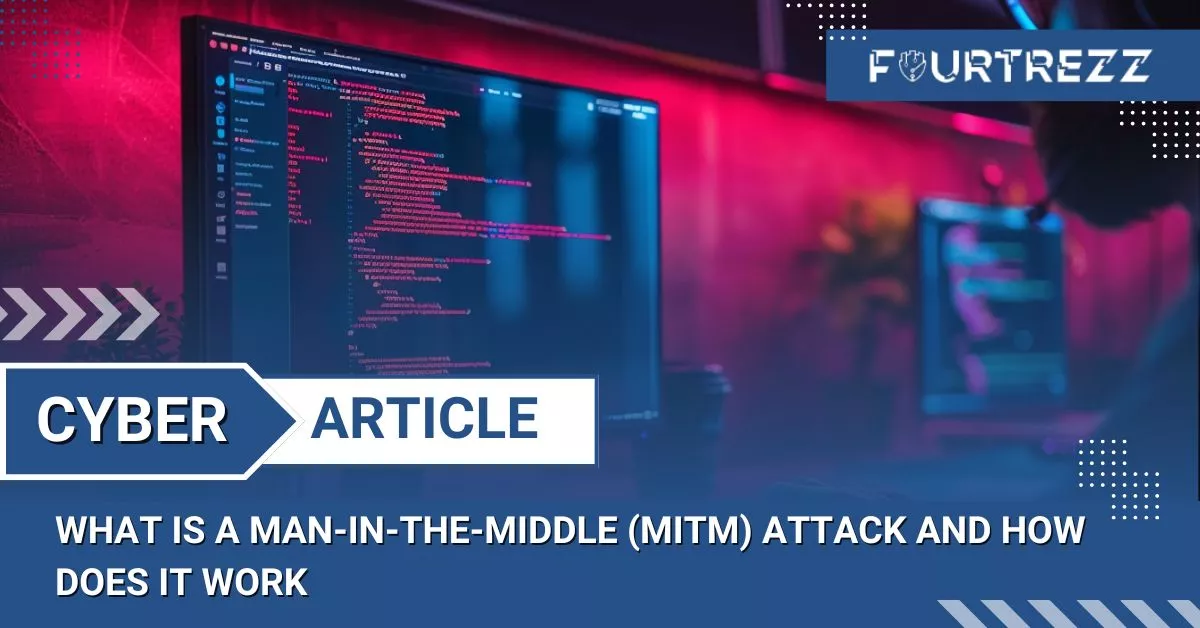Most people are unaware that when using the internet, they can fall victim to sniffing. Sniffing is a technique often utilized by hackers to spy on data transmitted through computer networks. Using a tool known as a sniffer, hackers can intercept data traveling through the network and steal sensitive information such as passwords, credit card details, and more. Sniffing poses a serious threat to computer network security, necessitating efforts to prevent and combat it. If you wish to learn more about sniffing and how to prevent it, read on. In this article, Fourtrezz will provide vital information about sniffing, how it operates, and ways to prevent and combat it. Additionally, this article will offer useful tips to safeguard your computer network from sniffing attacks.

Understanding Sniffing
Sniffing is a technique used to spy on data transmitted through computer networks. It’s usually carried out using a tool called a sniffer, which can intercept data traveling through the network and steal sensitive information such as passwords, credit card details, and more. Sniffing can be performed on local computer networks or the internet, posing a serious threat to computer network security. Hence, efforts are needed to prevent and combat sniffing to ensure sensitive information isn’t misused by malicious entities.
Types of Sniffing
Several types of sniffing can be carried out by hackers, including:
ARP poisoning, a sniffing technique that uses the ARP (Address Resolution Protocol) table to redirect data traffic to an unauthorized device.
DHCP spoofing, a sniffing technique that uses a fake DHCP server to redirect data traffic to an unauthorized device.
MAC spoofing, a sniffing technique that involves changing the MAC (Media Access Control) address on an unauthorized device to intercept data traffic.
Man-in-the-middle attack, a sniffing technique that places an unauthorized device between the communication of two other devices to intercept data traffic.
DNS spoofing, a sniffing technique that uses a fake DNS server to redirect data traffic to an illegitimate website.
Sniffing can be executed using various techniques and methods, necessitating efforts to prevent and combat it to ensure sensitive information isn’t misused by hackers.
How Sniffing Works
Generally, sniffing operates by intercepting data traffic traveling through computer networks. The sniffer, the tool used for sniffing, can connect to the computer network either through physical devices like LAN cables or wireless networks like Wi-Fi.
Once connected to the network, the sniffer can intercept data traffic and retrieve sensitive information such as passwords, credit card details, and more. The sniffer can intercept data sent by other devices on the network, even if the data is encrypted.
The sniffer can retrieve sensitive information in various ways, such as intercepting data sent via specific network protocols, applications, or connections. With a sniffer, hackers can obtain sensitive information without the knowledge of other device users connected to the network.
How to Detect Sniffing?
To detect sniffing, there are several methods that can be employed, including:
Using a sniffer tool capable of detecting sniffing activity on the network. This tool can identify devices engaged in sniffing and block their access to the network to prevent data interception.
Employing network security software that can detect sniffing activity on the network. This software can analyze network data traffic and identify devices engaged in sniffing, blocking their access to the network.
Regularly monitoring the network. This can be done by checking the list of devices connected to the network, periodically checking network activity, and monitoring network traffic to identify sniffing activity.
Enabling data encryption for data transmitted through the network. Encryption can secure data from sniffing by scrambling the data, rendering it unreadable to hackers.
By taking the above measures, you can reduce the risk of sniffing on your computer network and ensure the security of sensitive information transmitted through the network.
Protocols Used for Sniffing
Sniffing can be done by intercepting data traffic sent through various network protocols, including:
TCP/IP (Transmission Control Protocol/Internet Protocol) is a network protocol used for transmitting data over the internet. Sniffers can intercept data traffic sent through this protocol and retrieve sensitive information such as passwords and credit card details.
HTTP (Hypertext Transfer Protocol) is a network protocol used for transmitting data over the internet. Sniffers can intercept data traffic sent through this protocol and retrieve sensitive information such as passwords and credit card details.
HTTPS (Hypertext Transfer Protocol Secure) is a more secure version of the HTTP protocol that uses encryption to secure data transmitted over the internet. Despite the encryption, sniffers can intercept data traffic sent through this protocol using special techniques like man-in-the-middle attacks.
FTP (File Transfer Protocol) is a network protocol used for transmitting files over the internet. Sniffers can intercept data traffic sent through this protocol and…
To reduce the risk of sniffing on your computer network, efforts are needed to prevent and combat it. One way is by using a sniffer tool that can detect sniffing activity on the network and block access to the network to prevent data interception. Additionally, you can use network security software that can detect sniffing activity on the network and take necessary actions to combat it.
If you want to learn more about how to prevent and combat sniffing, contact our network security team immediately. We will provide accurate information and solutions to safeguard your computer network from sniffing threats. Don’t let your sensitive information be misused by hackers, contact our network security team right away.










